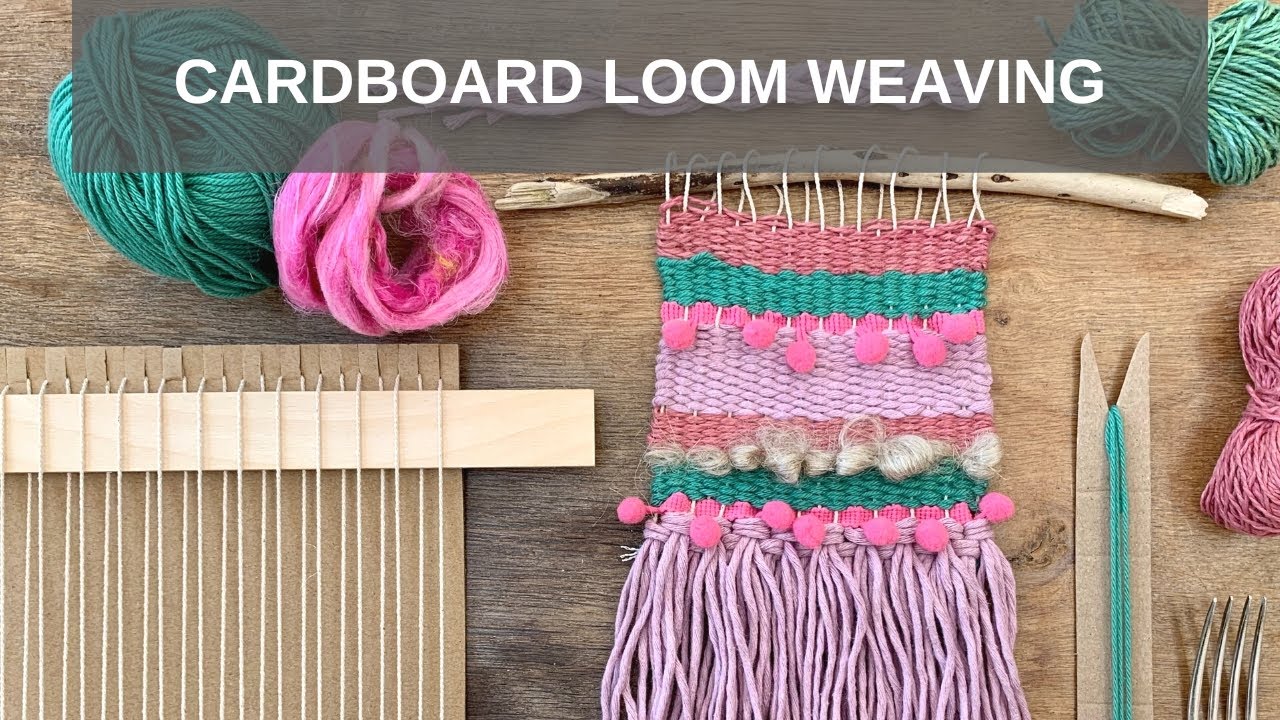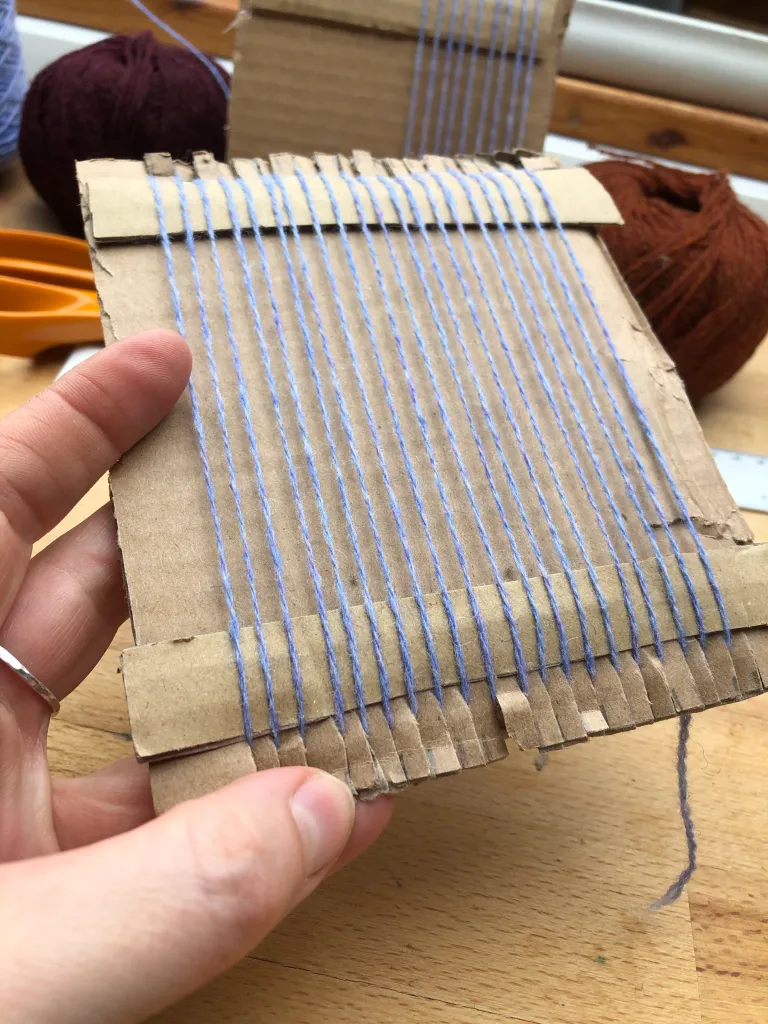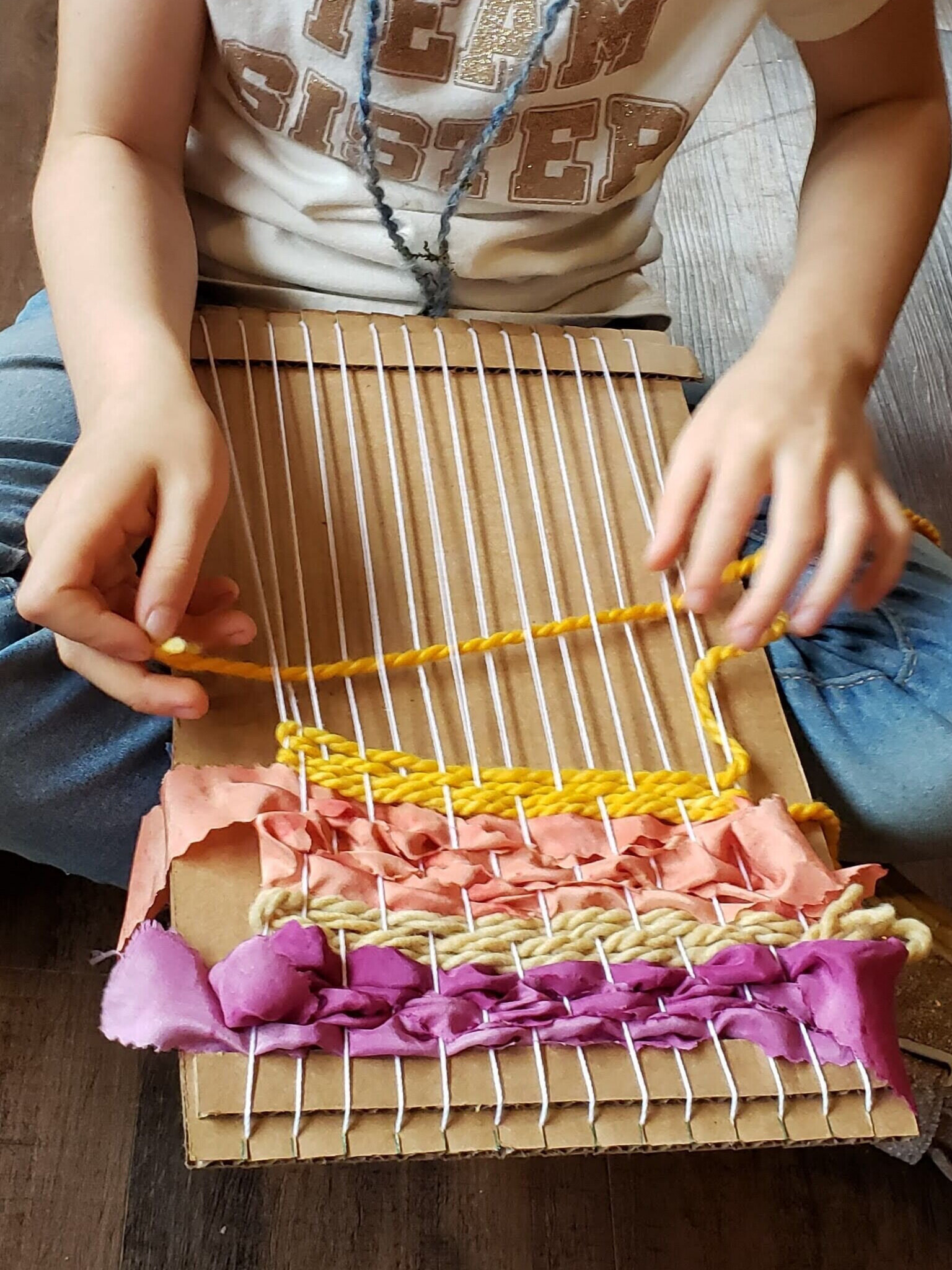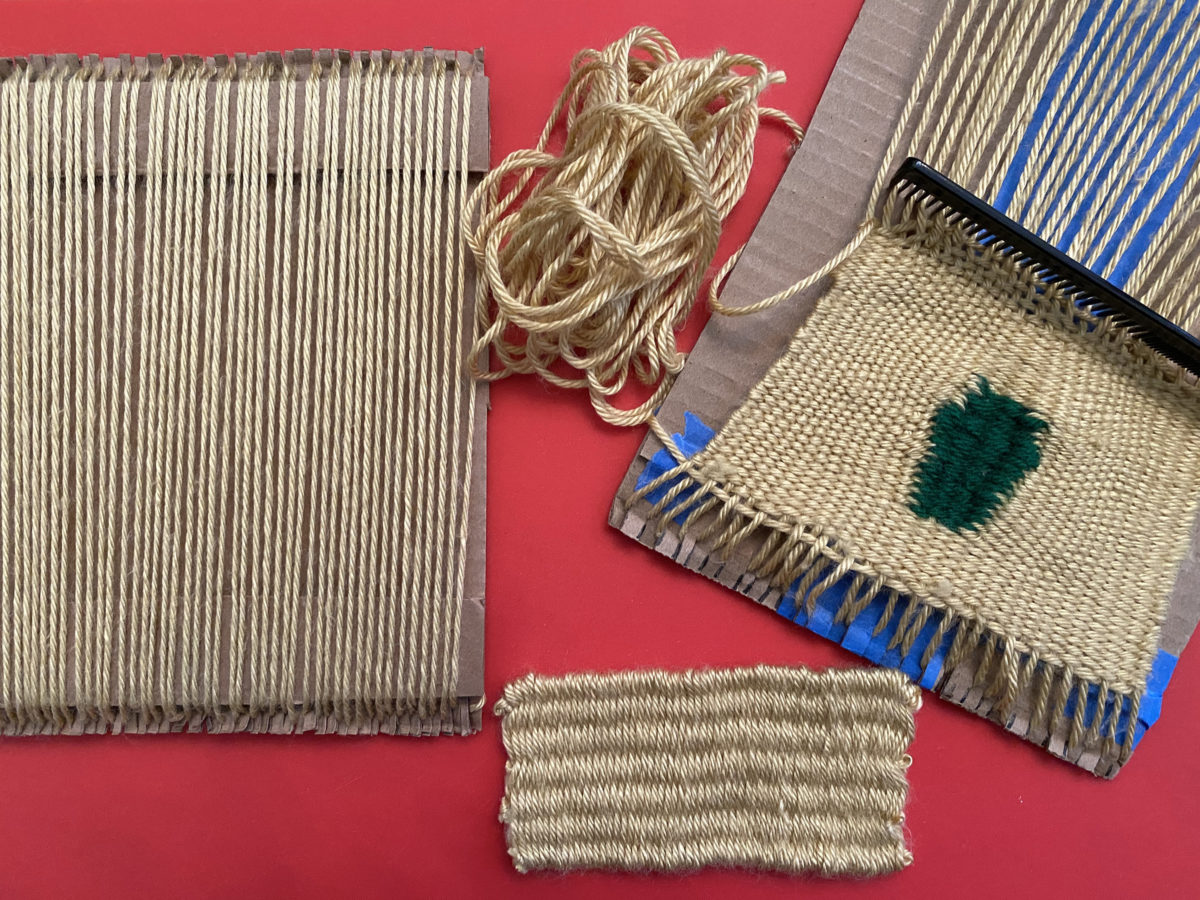Cardboard loom weaving is a fascinating craft that not only allows you to create beautiful and unique pieces of art, but also helps in turning trash into treasure. By using simple materials like cardboard and yarn, you can transform ordinary waste into something extraordinary.
In this article, I will guide you through the world of cardboard loom weaving, from its introduction and benefits to step-by-step instructions on building your own loom. Get ready to unleash your creativity and discover the joy of this sustainable art form.
Key Takeaways
- Cardboard loom weaving is an affordable and sustainable way to create beautiful textiles.
- Cardboard looms can be easily constructed with materials found around the house.
- Weaving on a cardboard loom allows for endless creativity and experimentation with different yarns and patterns.
- Troubleshooting common issues, such as tension and warping, is easy with a few simple tips.
- Cardboard loom weaving is a fun and rewarding hobby that can lead to unique and personalized projects.
Introduction to Cardboard Loom Weaving
Cardboard loom weaving is a technique that involves using a piece of cardboard as the base for creating woven designs with yarn or other fibers. It is an ancient craft that has been practiced by various cultures throughout history. The use of cardboard as a loom provides an accessible and affordable alternative to traditional wooden or metal frames.
The history of cardboard loom weaving dates back centuries ago when people would repurpose materials they had on hand to create functional tools for their crafts. Cardboard was readily available and easy to work with, making it an ideal choice for constructing makeshift looms. Over time, this technique evolved into a popular form of textile art that continues to be enjoyed by many today.
The Benefits of Using Cardboard as a Loom
One of the main advantages of using cardboard as a loom is its cost-effectiveness. Unlike traditional wooden or metal frames which can be quite expensive, cardboard is readily available at little to no cost. You can simply repurpose old boxes or packaging materials instead of purchasing specialized equipment.
Additionally, finding materials for your projects becomes much easier when using a cardboard loom. Yarns and fibers are widely available in craft stores or online shops, allowing you endless possibilities in terms of colors, textures, and thicknesses.
Furthermore, working with a lightweight and portable material like cardboard makes it convenient for crafting on the go. You can easily take your loom with you wherever you desire, whether it’s to a park, a friend’s house, or even on vacation. The versatility of cardboard as a loom material opens up new opportunities for creativity and exploration.
Materials Needed for Cardboard Loom Weaving
| Materials | Quantity |
|---|---|
| Cardboard | 1 large piece |
| Scissors | 1 pair |
| Ruler | 1 |
| Pencil | 1 |
| Tape | 1 roll |
| Yarn | varies depending on project |
To get started with cardboard loom weaving, you will need a few basic materials:
1. Cardboard: Look for sturdy pieces of cardboard that are thick enough to hold the tension of the warp threads without bending or warping themselves.
2. Scissors: A good pair of scissors is essential for cutting and shaping the cardboard to create your loom.
3. Ruler: Use a ruler to measure and mark the dimensions of your loom accurately.
4. Yarn needle: A yarn needle with a large eye is necessary for threading the weft yarn through the warp threads during weaving.
5. Yarn: Choose yarn in various colors and textures to bring your designs to life.
Step-by-Step Guide to Building a Cardboard Loom
Now that you have gathered all the necessary materials let’s dive into building your own cardboard loom:
1. Cutting the cardboard: Start by cutting out two identical rectangular pieces from your chosen piece of sturdy cardboard using scissors or a craft knife.
2. Marking the cardboard: Measure and mark evenly spaced notches along both short edges of one piece of cut-out cardboard using a ruler.
3. Folding the cardboard: Fold both pieces of cut-out cardboard in half lengthwise so that they form two long rectangles with notches on one side.
4. Cutting notches: Cut small slits at each marked notch along one folded edge on both pieces of folded cardboards.
5. Wrapping warp threads: Take one piece of folded cardboards and wrap it tightly with yarn from top to bottom between each pair of notches. Repeat this process with the second piece of folded cardboard.
Congratulations! You have successfully built your own cardboard loom.
Choosing Yarn and Other Materials for Weaving
When it comes to choosing yarn for your weaving projects, the possibilities are endless. Different types of yarn can create different effects and textures in your designs. Experiment with various fibers such as cotton, wool, acrylic, or even recycled materials like t-shirt yarn to add depth and interest to your weavings.
In addition to yarn, you can also incorporate other materials into your weavings. Consider adding ribbons, fabric strips, feathers, or even beads for a unique touch. Let your imagination run wild and explore different combinations of materials to create one-of-a-kind pieces.
Techniques for Weaving on a Cardboard Loom
Once you have set up your cardboard loom and gathered all the necessary materials, it’s time to start weaving! There are various techniques you can use depending on the design you want to achieve:
1. Basic weaving techniques: The simplest technique is plain weave where you alternate passing the weft thread over and under each warp thread across the entire width of the loom.
2. Advanced weaving techniques: As you gain confidence in basic weaving techniques, you can explore more advanced methods such as twill weave or tapestry weave which allow for more intricate patterns and designs.
Creating Patterns and Designs with Cardboard Loom Weaving
One of the most exciting aspects of cardboard loom weaving is creating patterns and designs within your woven pieces. By strategically placing different colors or thicknesses of yarn in specific areas during the weaving process, you can achieve stunning visual effects.
To create patterns within your weavings using a simple technique called color blocking: divide sections of warp threads into smaller groups by tying off certain threads with scrap yarn before starting each row or section with a new color.
For more intricate designs, you can experiment with techniques like pick-up weaving or tapestry weaving. These methods involve manually manipulating individual warp threads to create shapes, images, or even words within your woven piece.
Tips for Troubleshooting Common Issues with Cardboard Loom Weaving
As with any craft, cardboard loom weaving may come with its fair share of challenges. Here are some tips to troubleshoot common issues:
1. Warp tension issues: If your warp threads are too loose or too tight, it can affect the overall appearance and stability of your weaving. Make sure to maintain consistent tension throughout the process by adjusting the tightness of each row as needed.
2. Weft tension issues: Uneven weft tension can cause your weaving to pucker or become distorted. Pay attention to how tightly you pull each weft thread across the warp and try to maintain a consistent level of tension throughout.
3. Other common issues: If you encounter other problems such as tangled yarns or uneven edges, take a step back and assess what might be causing these issues. Sometimes simply slowing down and paying attention to detail can help resolve these minor setbacks.
Examples of Creative Projects Using Cardboard Loom Weaving
Cardboard loom weaving opens up a world of creative possibilities. Here are just a few examples of projects you can create using this technique:
1. Wall hangings: Design and weave unique wall hangings that add texture and color to any space in your home.
2. Coasters: Create personalized coasters by weaving small squares on your cardboard loom using vibrant yarns.
3.Scarves: Make stylish scarves by creating long panels on your loom that can be sewn together at the end for added warmth during colder months.
Sustainability and Environmental Benefits of Cardboard Loom Weaving
One significant advantage of cardboard loom weaving is its contribution towards sustainability and reducing waste. By repurposing cardboard and using recycled materials like yarn, you are actively participating in the movement towards a more eco-friendly lifestyle.
Instead of throwing away cardboard boxes or packaging materials, you can transform them into functional and beautiful pieces of art. This not only reduces waste but also encourages others to think creatively about how they can repurpose everyday items.
Conclusion and Inspiration for Future Cardboard Loom Weaving Projects
In conclusion, cardboard loom weaving is a versatile and sustainable craft that allows you to turn ordinary materials into extraordinary works of art. From building your own loom to exploring various weaving techniques and creating unique designs, the possibilities are endless.
I hope this article has inspired you to embark on your own cardboard loom weaving journey. Remember, the joy is not only in the final product but also in the process itself. So gather your materials, let your creativity flow, and enjoy every moment of this ancient yet modern craft.
FAQs
What is cardboard loom weaving?
Cardboard loom weaving is a form of weaving that uses a loom made from cardboard. The cardboard loom is used to hold the warp threads in place while the weft threads are woven through them to create a textile.
What materials are needed for?
To make a cardboard loom, you will need cardboard, scissors, a ruler, and a pencil. For weaving, you will need yarn or other weaving materials, a weaving needle, and a pair of scissors.
What are the benefits?
Cardboard loom weaving is an inexpensive and eco-friendly way to create textiles. It is also a great way to develop fine motor skills and hand-eye coordination. Additionally, it can be a relaxing and meditative activity.
What can be made?
Cardboard loom weaving can be used to create a variety of textiles, including wall hangings, rugs, scarves, and bags. The possibilities are endless, and the only limit is your imagination.
Is cardboard loom weaving suitable for beginners?
Yes, cardboard loom weaving is a great activity for beginners. It is easy to learn and requires only a few basic materials. There are also many tutorials and resources available online to help you get started.
Where can I find instructions for cardboard loom weaving?
There are many resources available online for cardboard loom weaving, including tutorials, videos, and patterns. You can also find books and magazines on the subject at your local library or bookstore.
Originally posted 2024-01-15 04:11:57.






